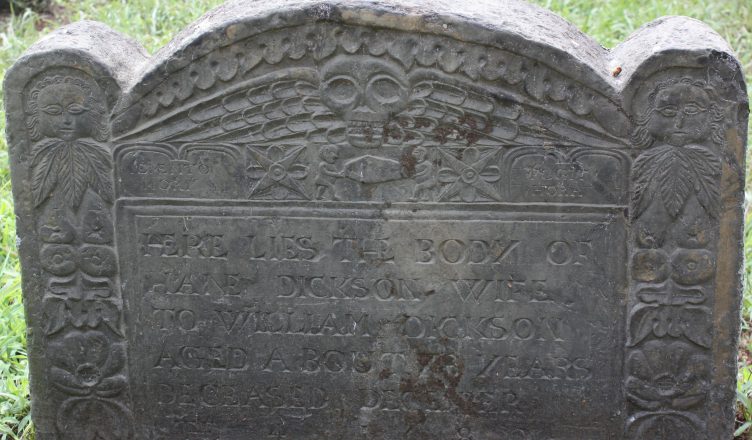Joseph Lamson was born in Ipswich, Massachusetts in 1658, the son of William and Sarah (Ayers) Lamson. Joseph Lamson’s early designs suggest he apprenticed with the Boston Stone Cutter. His Death’s Head eyebrows, Latin phrases, and skull shapes were borrowed from the Boston Stone Cutter, also known as the Charlestown Stonecutter. They were the only two carvers in Boston regularly using eyebrows. Lamson’s Latin was simpler—Memento Mori or Fugit Hori as opposed to the Boston Stonecutter’s classical Latin phrases.
Lamson created the first New England portrait effigies–though they were not necessarily a portrait of the deceased. Joseph’s work started around 1677 and continued with his sons Nathaniel and Caleb from about 1722-1767. While Joseph did not sign his work, Nathaniel and Caleb did, using their initials. Their stones were typically thick-banded slate with rough, unpolished backs. At least two grandsons and three great grandsons of Joseph became stone cutters.
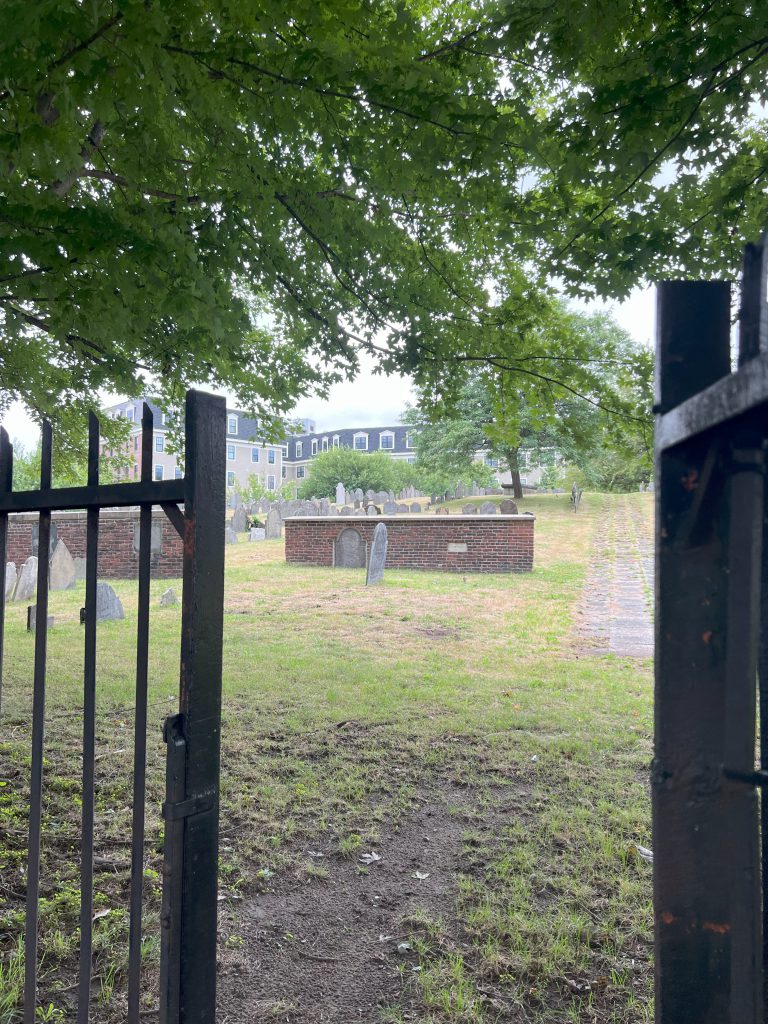
Joseph, Nathaniel and Caleb are buried in the Phipps Street Burying Ground (left photo) in Charlestown (Boston). The sign at the entrance to the cemetery states:
This was Charlestown’s first cemetery, established about 1630. Local lore has it that the irregular layout corresponded to a map of the town. Many of the stones feature the art of the “Charlestown Carver,” an anonymous stonecutter working in the 1660’s who developed an important regional style continued by generations of the Lamson family.
One of the more original Lamson designs were chubby, little dart-throwing men that are known as The Imps of Death (photo below.) The imps, often found below the death’s head, were frequently accompanied by coffins, funeral palls, darts, crossbones, and an hourglass.
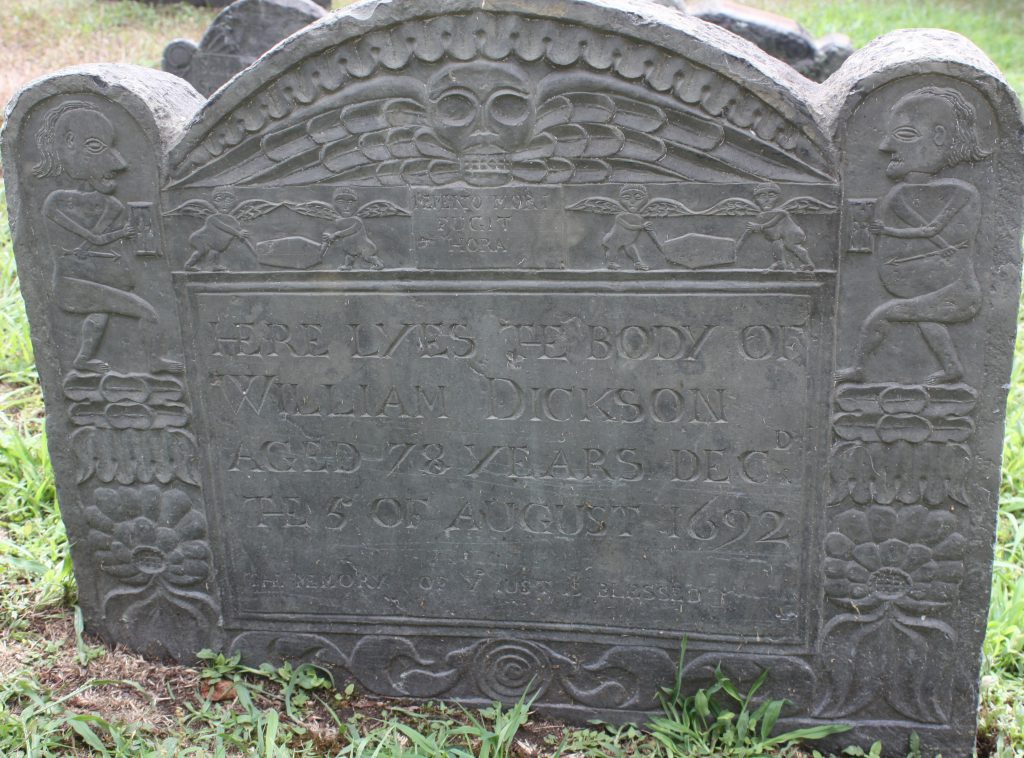
Joseph Lamson’s imps with coffins are below the death’s head, while two large imps with hourglasses and darts are in the side panels. The framed inscription is a common Lamson feature.
William Dickson (1692), Old Burying Ground, Cambridge, Massachusetts.
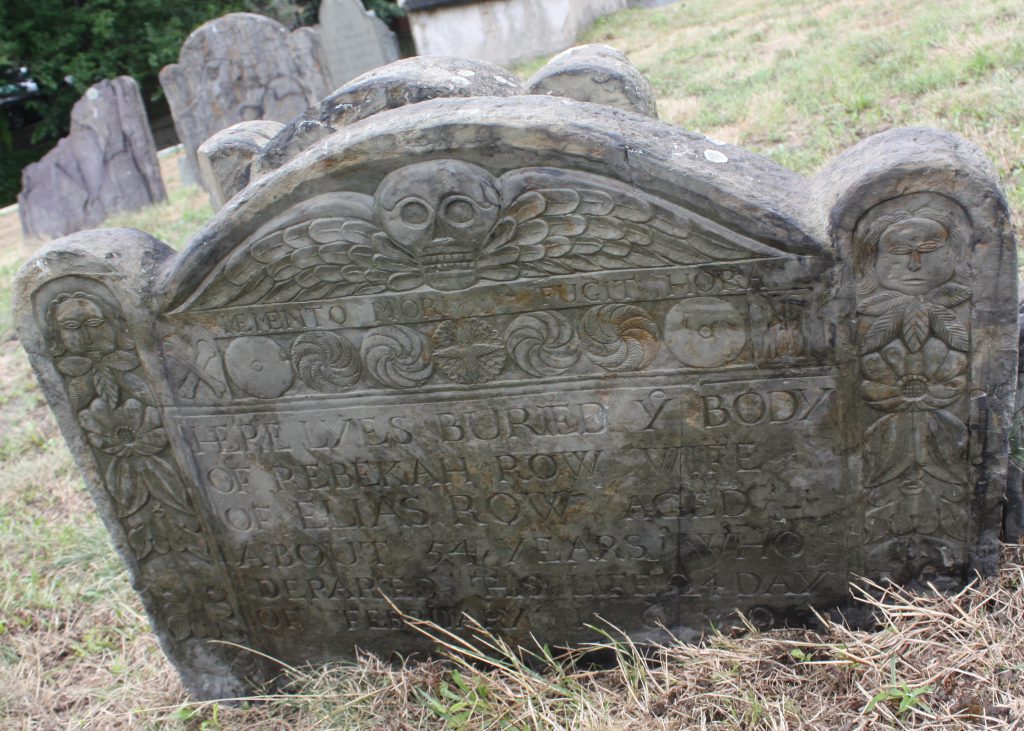
Rebekah Row (1680) is an excellent example of the floral motif used in Lamson’s side panels as well as the soul effigies at the top of each panel.
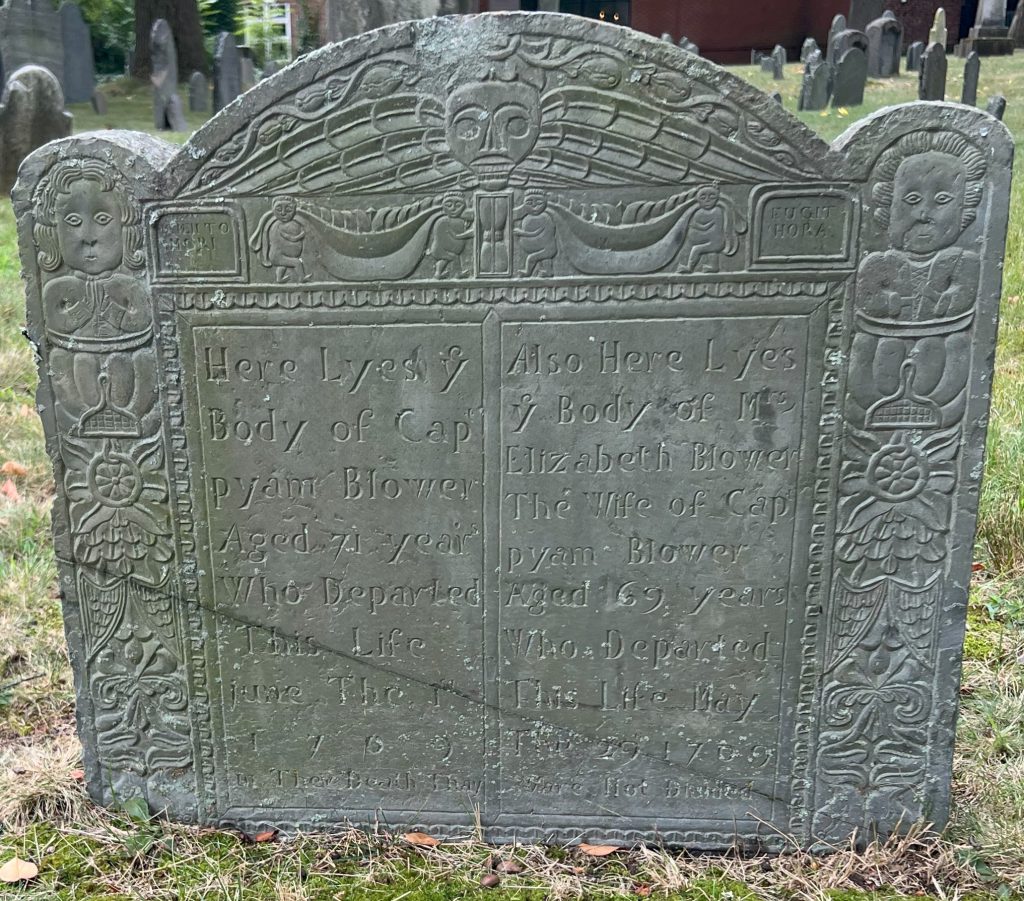
Captain Pyam Blower and his wife Elizabeth (1709) are buried in the Old Burying Ground in Cambridge, Massachusetts. Their portrait effigies on the top of the side panels are among the earliest in New England.
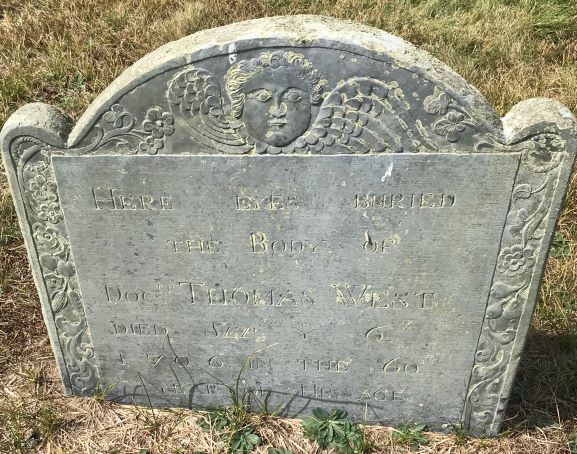
Dr. Thomas West (1706), buried in West Tisbury Village Cemetery, features the earliest Cherub motif on Martha’s Vineyard.
References:
Harriette M. Forbes, Gravestones of Early New England and the Men Who Made Them
Joseph J. Iarocci, Martha’s Vineyard Gravestones from 1688 to 1804: An Historical Study
Allan I. Ludwig, Graven Images
Elisabeth L. Roark, Artists of Colonial America,
Ralph L. Tucker, The Lamson Family Gravestone Carvers of Charleston and Malden, Massachusetts. Markers Vol. 10, p 151
